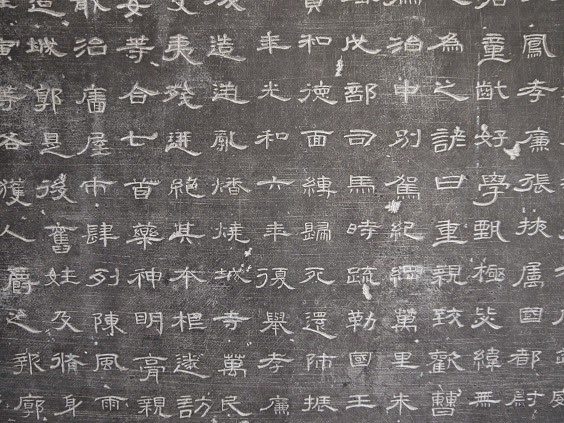If you keep walking down Shu Yuan Men, you will come to the Forest of Stelae, or Bēilín in Chinese. Many of our Chinese friends from Xi'an say this is their favorite museum to visit in the city. It's not as high on our list of sites, but that's because we can't enjoy it fully because it requires a good level of Chinese if you want to understand what any of the stelae actually say.
Here's the entrance and some other shots we got from walking into the museum.
The museum is housed in a former Confucian Temple and it has housed a growing collection of Stelae since 1087. It has nearly 3,000 stelae and it is the biggest collection of
stelae in China. Most of its exhibits are stelae of the Tang Dynasty. Some parts of the collection are books written by Confucius along with many other kinds of writings and books. Some unusual examples of stelae include an 18th-century one depicting a Yangtze River flood control project and another that appears to be a bamboo forest, but after looking closely you can see that the leaves and branches form a poem.
These are some typical examples of what you can see there.
The famous Nestorian Stele was moved to the Stele Forest in 1907, after the local authorities learned that a Danish adventurer was trying to "obtain" the ancient monument and take it out of the country. This stele was constructed in 781 and documents 150 years of early Christianity in China.
We couldn't get a great picture of it because of its glass (plexiglass?) covering, and it was being monopolized by a young boy. But here you go.
Although we couldn't read the stelae, it was interesting to see the older characters on some of them. You can see these characters are quite different and much more round in their shape. They look more pictographic than both modern traditional and simplified Chinese characters.











No comments:
Post a Comment